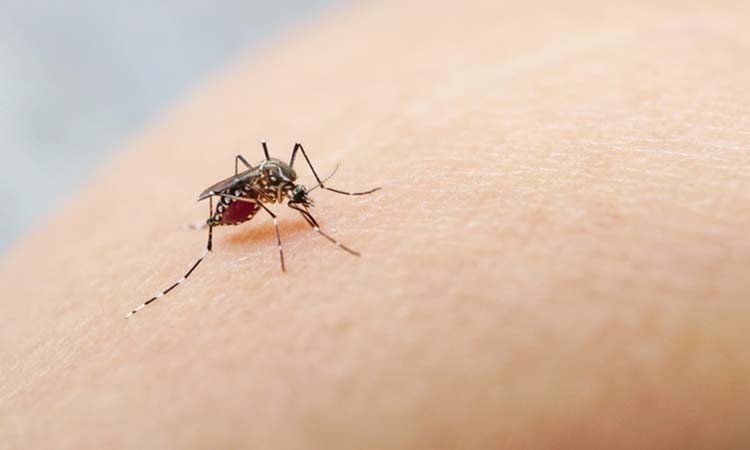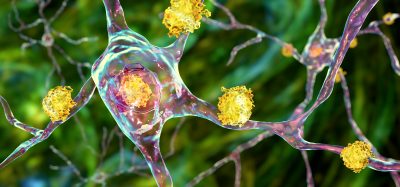New gene linked to Malaria parasite’s chloroquine resistance
Posted: 24 May 2023 | Taylor Mixides (Drug Target Review) | No comments yet
Researchers have important implications for the ongoing fight against malaria, a disease that affects approximately 247 million individuals and causes over 619,000 deaths each year, predominantly among young children.


For a long time, it was believed that the evolution of malaria parasites to resist a major antimalarial drug was solely associated with one specific gene. However, an international research team has recently discovered that a second gene also plays a significant role in malaria’s resistance to the drug chloroquine, through a combination of field and laboratory studies.
The finding, published in Nature Microbiology, have important implications for the ongoing fight against malaria, a disease that affects approximately 247 million individuals and causes over 619,000 deaths each year, predominantly among young children.
Dr Timothy JC Anderson, from the Texas Biomedical Research Institute and one of the lead authors of the study, emphasises the significance of comprehending how treatments contribute to parasite evolution and how this process may differ across various regions, particularly with the increasing prevalence of drug-resistant pathogens. Although chloroquine was subsequently replaced by various antimalarial drugs, the evolution of resistance continues to pose a challenge in parasite control. In 2000, scientists identified a gene called the chloroquine resistance transporter (pfcrt), which facilitated the transportation of chloroquine out of crucial cell regions in the parasites, rendering the drug ineffective.
“That resistance gene, pfcrt, is infamous,” says University of Notre Dame Professor Dr Michael Ferdig, and one of the lead paper authors. “To find that pfcrt has a partner in crime should not be a surprise – genes interact with each other as part of evolution all the time. But it was only with new tools and our integrated approach that we could finally pinpoint the specific culprit.”
Among the six species of malaria parasites that affect humans, Plasmodium falciparum is recognised as the most lethal. In this study, scientists from the Medical Research Council Unit in The Gambia, affiliated with the London School of Hygiene & Tropical Medicine, along with their collaborators, examined over 600 genomes of P. falciparum collected in The Gambia between 1984 and 2014. Analysis of this 30-year dataset unveiled that mutations in a second gene responsible for encoding an amino acid transporter (AAT1) increased from 0 percent frequency in 1984 to 97% frequency in 2014.
“This is a very clear example of natural selection in action – these mutations were preferred and passed on with extremely high frequency in a very short amount of time, suggesting they provide a significant survival advantage,” says Medical Research Council Unit The Gambia at London School of Hygiene & Tropical Medicine Professor Dr Alfred Amambua-Ngwa, and one of the first authors. “The mutations in AAT1 very closely mirror the increase of pfcrt mutations. Given this, it strongly suggests AAT1 is involved in chloroquine resistance.”
Through genetic crosses between chloroquine-sensitive and chloroquine-resistant parasites, the researchers experimentally evaluated the role of AAT1 mutations. They utilised CRISPR gene-editing technology to replace the mutations in parasite genomes in the lab, observing the subsequent effects on drug resistance. Nottingham University contributed to the research by testing the gene’s function in yeast, confirming that the mutations indeed led to drug resistance.
However, the research team’s exploration extended beyond these findings. Further analysis of additional malaria genome datasets demonstrated that the AAT1 mutations responsible for conferring resistance vanished in Africa once chloroquine ceased to be used, aligning with the expected pattern. In Southeast Asia, however, the situation differed significantly, as the mutations persistently remained even after the discontinuation of chloroquine use in the region.
“Our analyses showed that parasites from Africa and Asia carry different pfaat1 mutations, and our experimental data suggest that this may underlie the differences we observe in drug resistance evolution in Africa and Asia,” says Ferdig.
Related topics
Drug Targets, Genome Editing, Genomics, Targets
Related conditions
Malaria
Related organisations
British Wellcome Sanger Institute, London School of Hygiene & Tropical Medicine, Mahidol-Oxford Tropical Medicine Research Unit, Medical Research Council Unit in The Gambia, Texas Biomedical Research Institute (Texas Biomed), University of Texas Health Science Center at San Antonio (UT Health San Antonio)
Related people
Alfred Amambua-Ngwa, Ashley Vaughan, David Conway, Professor Timothy J.C. Anderson








